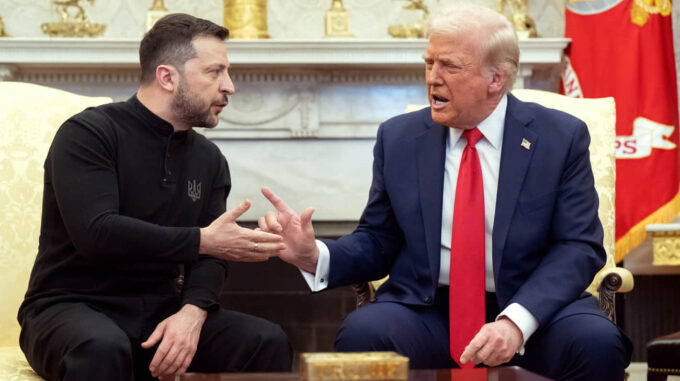Vensa’s cousin expressed a surprising hypothesis: the scene between Zelensky and Trump, which stirred society and the media, might not have been just an accidental or humorous stunt, but a deliberate performance intended for someone who was “not in the room” — possibly for Vladimir Putin

Such comments were made in an interview with Nate Vensa, a first cousin of U.S. Vice President Joe Biden, sparking a new wave of discussions about political games and diplomatic strategies surrounding the Ukrainian leader and his meeting with the American president. Vensa's testimony appeared amid tense debates over the recent official visits of the Ukrainian president to the United States. Many found his unusual behavior intriguing — particularly, his absence of the traditional suit during a meeting with Donald Trump at the White House in winter. After the interview, Vensa noted that his inquiry about Zelensky’s casual clothing choice was not intended as disrespect or insult. On the contrary, he emphasized that he was interested in the motives of the Ukrainian leader. “I asked J.D.: 'Honestly, I don’t want to sound cynical, but if I don’t have a suit, should I worry?' He replied: ‘No, you shouldn’t. We often have many guests, and everyone treats them like normal people,’” Vensa recounts. According to him, he has long known that Zelensky has not worn a suit since the start of Russia's full-scale invasion of Ukraine. This unconventional clothing “strategy” was not a sign of disrespect or weakness on the part of the Ukrainian president. J.D. Vensa himself, according to his cousin, tried to explain that Zelensky’s decision was a conscious choice. “We discussed this with J.D. — he understands that it’s not a matter of rudeness but a way to convey a certain message. It’s been more than just a dress code casualness,” he notes. Importantly, this gesture contains a symbolic element and may have been aimed at someone specific — either Ukrainian leadership or, quite possibly, the Kremlin. There was also a suggestion that this tactic could have been a “performance” designed for Vladimir Putin — perhaps to create a psychological effect or send a signal to those “not in the room.” According to Vensa, Zelensky has refused to wear a suit since the beginning of Russia’s invasion. Although in Poland, former president Andrzej Duda called on the Ukrainian colleague “to come to the summit in a suit,” that appeal went unheeded. Recall that earlier — in February — a scandal erupted in the U.S. Oval Office over Zelensky’s appearance. Reporters asked why he appeared without a suit during an important meeting with American leaders. The Ukrainian president himself responded to a newspaper: “Why not? I don’t have a suit. What’s so strange about that?” This led to numerous discussions in the media and among political analysts, many of whom see his non-compliance with formal dress codes as a kind of protest and a symbol of resistance. It’s worth noting that Zelensky’s attire has previously been a topic of discussion: some experts believe that such informality sharply contrasts with the traditional diplomatic dress code worldwide and can serve to draw attention to Ukraine’s situation, emphasizing principles and a desire for victory. As for Trump himself — reports suggest that his personal disappointment over Ukraine’s unconventional appearance may have increased tension during their meeting, complicating diplomatic dialogue. Thus, interpretations of the situation remain open, but all confirm the importance of symbolism and psychological tactics in modern politics. And the fact that attempts speak louder than words has never been more evident than in this story.

